
In the early 1960s, a tidy little war broke out along the border between Indonesia and East Malaysia on the island of Borneo. European colonialism had subdivided the planet into a bewildering amalgam of fiefdoms and protectorates, and the sundry peoples involved yearned to define themselves in the aftermath of the Second World War. On August 29, 1964, this tidy little war got quite messy.
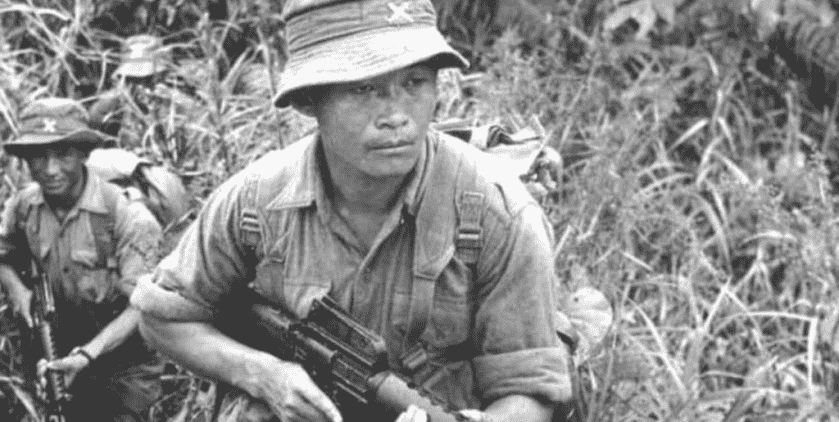
Lance Corporal Amarjit Pun was the second-in-command for the point section of 10 Platoon, C Company, 2d Gurkha Rifles, on a company-strength patrol along the border south of Kumpang Langir. A company-sized element can be unwieldy on a protracted combat patrol, and all involved were looking forward to getting back to base for some rack time. However, as the patrol headed for home, they unwittingly walked into a kill zone.
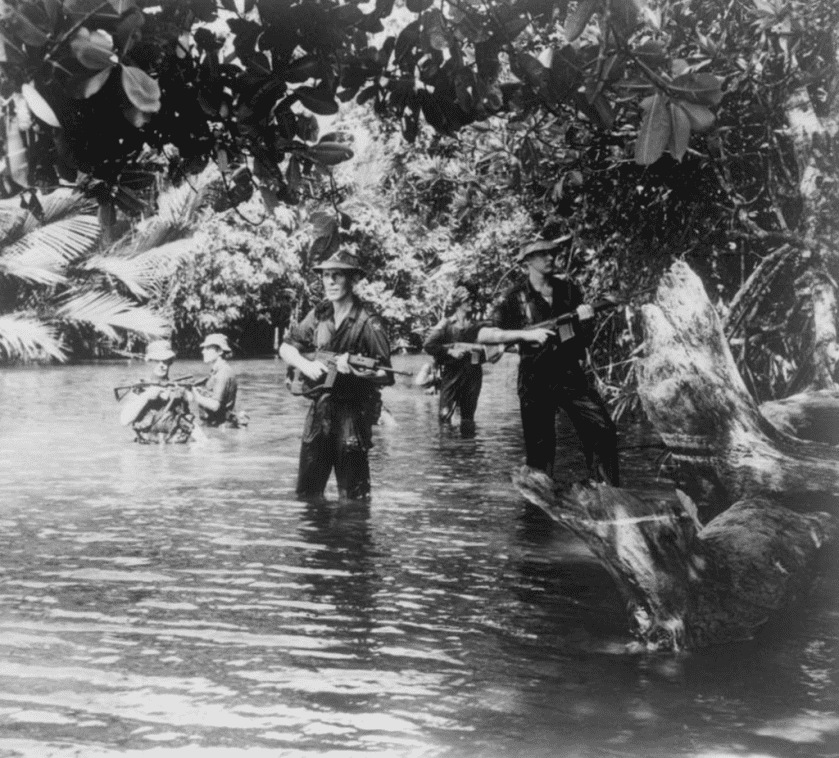
The ambush was of the classic sort. Indonesian infantry well concealed in the jungle underbrush allowed the Gurkhas to walk deep into their killing ground before initiating the ambush with a murderous rain of small arms fire. In the first salvo, Lance Corporal Amarjit’s section commander was grievously wounded, while one of his NCOs was killed outright. The light machinegun team was also taken out of action. The Number 1 gunner was killed and his Number 2 badly hurt. Another rifleman was hit as well. The situation for LCPL Amarjit’s Gurkhas looked grave.

It is the most basic tenet of Infantry training to instinctively assault through an ambush. This goes against every natural urge a man might have in combat. When faced with murderous fire from an unexpected quarter, the natural response is to drop or hide. However, hesitating inside a kill zone equals violent gory death.

A friend who landed on Omaha Beach on June 6, 1944, once told me that stagnation meant dying. He said the fire coming from the German pillboxes was indeed overwhelming, but that combat leaders on the ground pushed their men forward into the chaos. He explained that he charged across the beach to cover, but that every member of his small unit that hesitated on that beach died.

Infantry soldiers are therefore trained on immediate action drills in response to an ambush. They are expected to react instinctively without a great deal of conscious thought. Sometimes that works, and sometimes it doesn’t. In the case of LCPL Amarjit Pun, this compact little man seized the initiative and took charge.
Turning the Tide
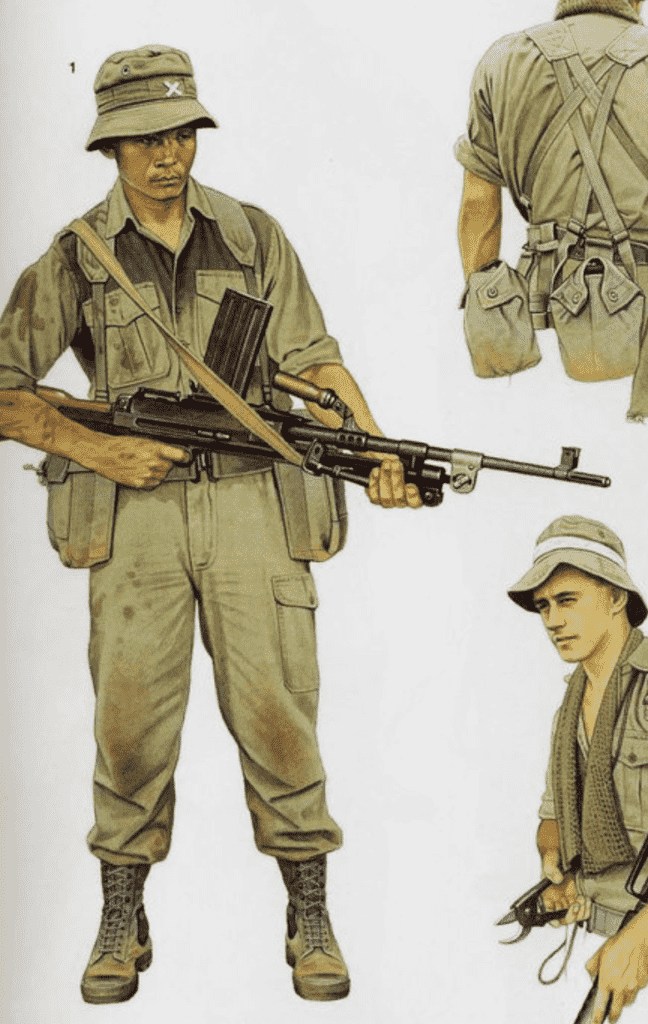
LCPL Amarjit charged forward and retrieved the fallen L4 Bren gun intending on using the discarded weapon on the attackers to help break the ambush. As he hefted the heavy gun another burst of fire raked over him, striking the Bren and putting it out of action. A lesser man might at this point have run or broken. LCPL Amarjit, however, was a Gurkha.
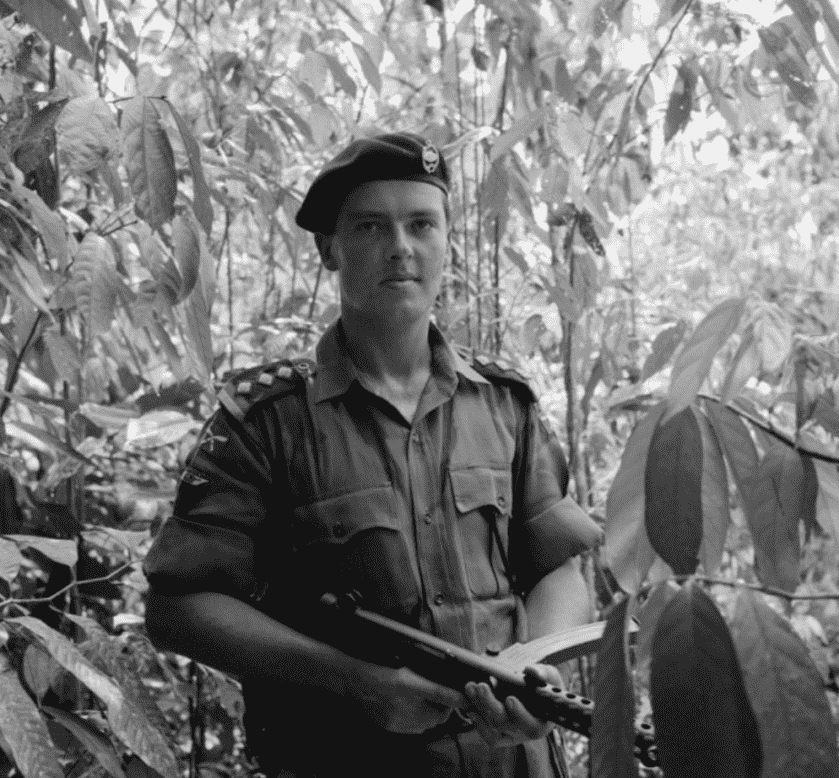
Amarjit Pun stood his ground in the center of the worn jungle track and unlimbered his British-issue L2A3 Sterling submachinegun. Fire poured in from Indonesian troops concealed a mere ten yards away. LCPL Amarjit thumbed his selector to full auto and squeezed the trigger, raking the jungle with 9mm rounds.

Amarjit emptied his Sterling at its cyclic rate and dropped the empty magazine. All the while he shouted encouragement to his comrades. He fished out a second 34-round mag, shoved it into the gun, jacked the bolt back, and emptied it at the nearby Indonesians as well. Throughout it all, heavy fire from the ambushing soldiers ripped the jungle and tore Amarjit’s patrol to ribbons. LCPL Amarjit burned through magazines as fast as he could cycle the gun.
The Weapons

While the Bren light machinegun has become irrevocably associated with British and Commonwealth troops fighting everywhere from North Africa in World War 2 to the Falklands, the gun was actually a Czech design. A license-produced version of the Czech ZGB 33 light machinegun, the ZGB 33 was itself a modified variant of the ZB vz. 26. Vaclav Holek was the primary designer. The name Bren is a portmanteau derived from Brno, the Czech city in Moravia where the gun was designed, and Enfield, the site of the Royal Small Arms Factory.
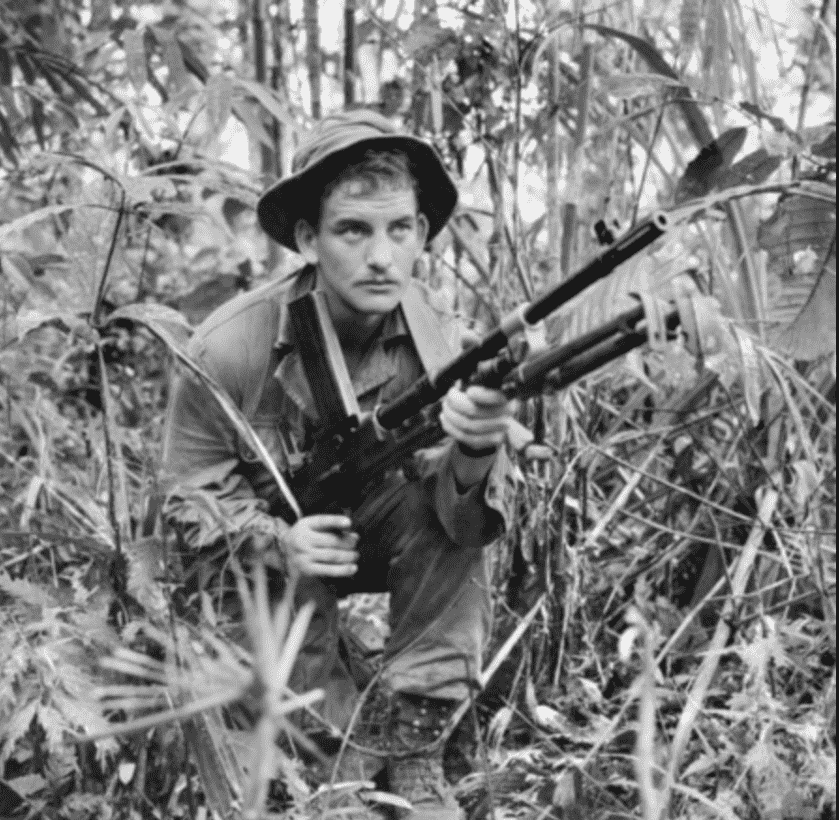
The earliest Bren gun weighed about 25 pounds and fed from a sharply curved magazine located atop the weapon to accommodate the rimmed .303 British round. The L4A4 Bren used by LCPL Amarjit’s men was the later version rechambered to accept the rimless 7.62x51mm cartridge. This variant can be identified at a glance by its straighter magazine. This 30-round box magazine was intentionally designed such that it would be interchangeable with that of the L1A1 SLR FAL rifles used by British forces at the time.
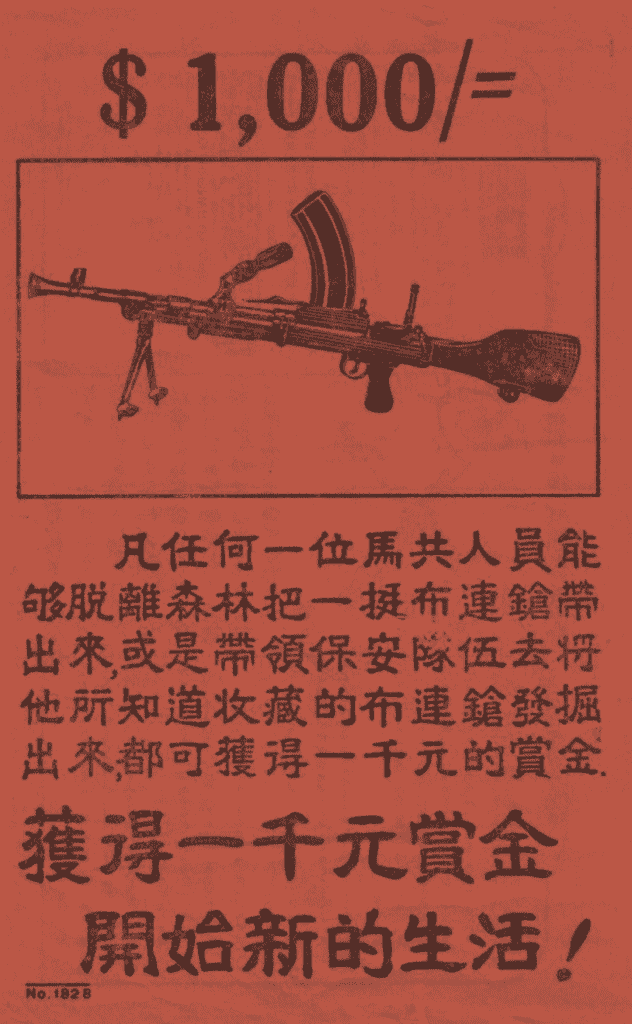
The Bren is indeed heavy in action, but its sedate 500-rpm rate of fire renders it thoroughly controllable. The Bren served in a similar role as the American BAR. Unlike the BAR, the Bren enjoyed a quick change barrel capability. The reliable tilting bolt, gas-operated action rendered splendid service in dirty environments. Additionally, while the gun was limited by its magazine feed system, the top-mounted design made mag changes fast. Each man in a British Infantry squad typically carried spare magazines for the Bren.

The Sterling submachine gun was an evolutionary improvement on the Sten that helped the British win World War 2. Developed in 1944, the Sterling was the brainchild of George William Patchett, the principal designer at the Sterling Armaments Company of Dagenham. Trial versions of the Sterling actually saw limited action in the closing months of World War 2, specifically with British Commando forces and at Arnhem with the British 1st Parachute Division during Operation Market Garden.

The Sterling generally favored the Sten that inspired it but represented an improvement across the board. The pistol grip was set at the rough center of balance of the gun, and the weapon fed from a superb side-mounted 34-round curved magazine. The Sterling was designed from the outset to feed from either Sterling or Sten magazines.

The Sterling is built around a drawn steel tube milled out and perforated as needed. It is finished out in a peculiar bake-on crinkle finish. This finish seems strangely similar to pickup truck bed liner. While early Sterlings featured a charging handle slot milled in line with the ejection port, production models were moved slightly higher.

One curious aspect of the Sterling design as it relates to American shooters is that the gun can be legally constructed from a registered transferable Sten tube. The BATF has allowed enterprising gunsmiths to adapt Sten tubes to accept demilled Sterling parts kits. The final product is referred to as a Stenling in the vernacular. As the Sterling is a markedly more pleasant and effective weapon than the Sten, this is a popular conversion.
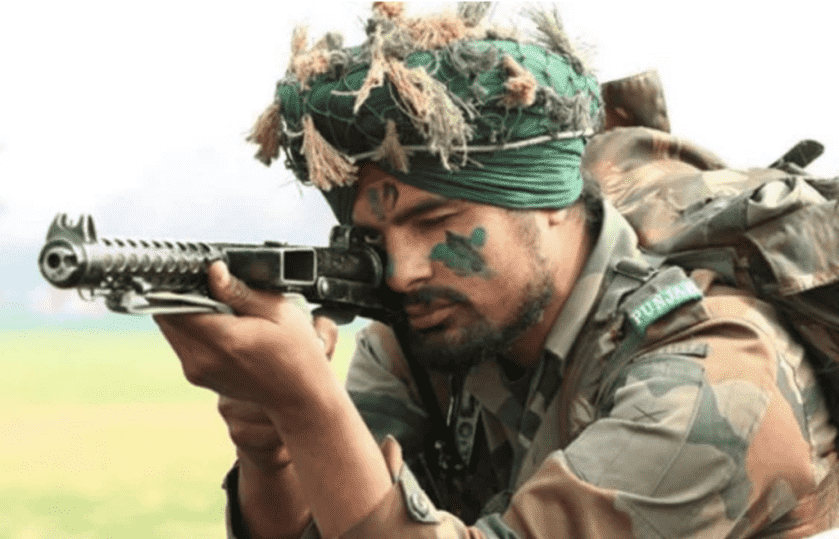
The Sterling’s delightful balance and sedate 550-rpm rate of fire make it unusually controllable. The gun fires from the open bolt and is selective fire via a thumb-operated selector level oriented above the trigger. The collapsible stock on the Sterling is a bit complex but remains nonetheless rigid and effective.

The Sterling is one of the most controllable open-bolt subguns I have ever run. The telescoping recoil system of the German MP40 is perhaps incrementally smoother, but the Sterling still runs like a champ. The Sterling is also unusually compact and handy. This makes it the ideal weapon for combat leaders and second-line support troops who might need their hands free for other tasks.
The Rest of the Story

LCPL Amarjit stood his ground on that tiny jungle trail, dumping magazine after magazine of full auto 9mm fire into the Indonesian troops. His furious close-range assault broke the back of the ambush and bought enough time for the rest of the company to maneuver in place and displace the enemy. The Indonesians subsequently retreated into the jungle. Amarjit’s Gurkhas gathered up their casualties and returned to their base camp.

LCPL Amarjit was unhurt during the chaotic exchange. However, his uniform and equipment had been pierced by Indonesian bullets in three different places. The combination of LCPL Amarjit’s unswerving bravery in the face of the withering enemy attack and the heavy volume of automatic fire from his Sterling submachine gun broke the Indonesian ambush and prevented further casualties to his Gurkha unit.

LCPL Amarjit Pun earned the Military Medal for his actions on that jungle trail back in 1964. The Military Medal was established in 1918 and was used to recognize acts of valor among other ranks such as NCOs and Warrant Officers. Recipients were granted a modest stipend and entitled to include the post-nominal letters “MM” after their names in official correspondence. Though the award was discontinued in 1993 in favor of the Military Cross which is granted to all ranks, the Military Medal still recognizes exceptional bravery in combat.

Wars are fought for territory, greed, and all manner of lofty nationalistic motivations. However, men invariably fight for their buddies. When the incoming fire seemed overwhelming and his comrades were falling LCPL Amarjit Pun unlimbered his Sterling submachine gun and won the day. Sometimes big things do indeed come in small packages.





An excellent story about a fine weapon used by a brave man.
Before trying a Sterling i didn’t think much of them. The one I shot was reliable and accurate in skilled hands it will do well taking the limits of 9mm round into consideration. The magazine is a wonderful design
I read somewhere that the M3 “grease gun” was still being used by some of our (U.S) tank crews. I wonder how the M3 would compare to the Sterling. In WWII movies and documentaries, the main battle tactic seemed to be “fire and maneuver. In our infantry training we concentrated on “on-line assault,” ambush, and counter-ambush. all three tactic depend on “fire superiority” (huge volumes of fire from our M16s and M60 machineguns). The counter-ambush tactic was basically a variation of the on-line assault deployed from the “tactical columns” movement formation. I don’t remember ever being taught the “fire and maneuver.”
From experience gleaned from those that have lived through it- Unofficial Army Doctrine was refined to the simplest tactics. Caught in a U, L, shaped or linear ambush- immediately counter ambush popping smoke. The only other recourse besides dying in place is to call indirect fire onto ones own position or direct fire via aerial platform. All these were crummy choices but there it is. Something to note- we AWAYS initiated an ambush via mechanical ambush first. Claymores tripwired and daisy chained. Hell we put them in trees. “The enemy is best taken by Ambush”
Great Read. Was there a mention anywhere regarding the number of casualties on both sides?
You forgot to mention that the sterling is also known as the E-11 Blaster Rifle as used by Stormtroopers in the original Star Wars trilogy.. 🙂